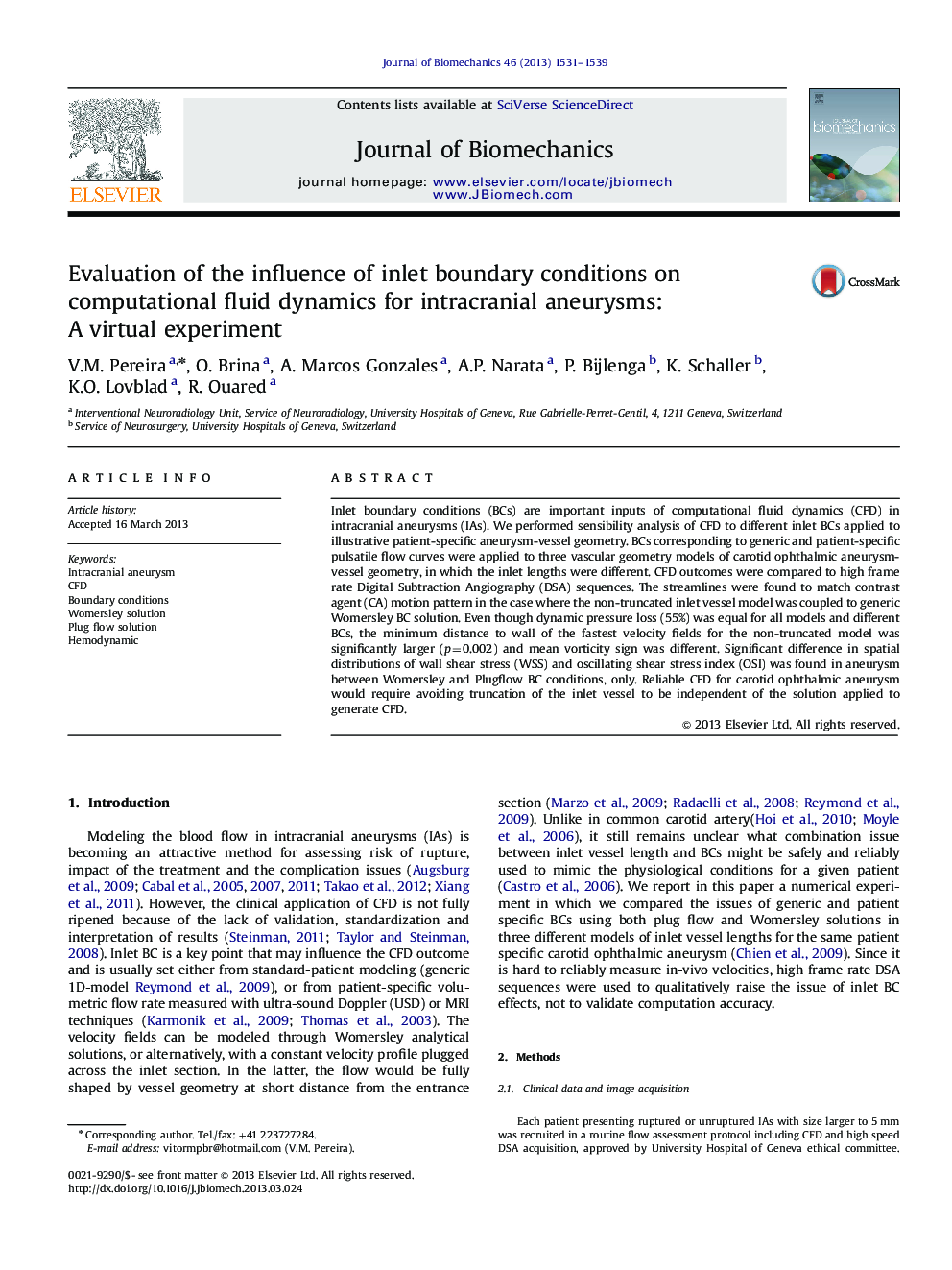| Article ID | Journal | Published Year | Pages | File Type |
|---|---|---|---|---|
| 872083 | Journal of Biomechanics | 2013 | 9 Pages |
Inlet boundary conditions (BCs) are important inputs of computational fluid dynamics (CFD) in intracranial aneurysms (IAs). We performed sensibility analysis of CFD to different inlet BCs applied to illustrative patient-specific aneurysm-vessel geometry. BCs corresponding to generic and patient-specific pulsatile flow curves were applied to three vascular geometry models of carotid ophthalmic aneurysm-vessel geometry, in which the inlet lengths were different. CFD outcomes were compared to high frame rate Digital Subtraction Angiography (DSA) sequences. The streamlines were found to match contrast agent (CA) motion pattern in the case where the non-truncated inlet vessel model was coupled to generic Womersley BC solution. Even though dynamic pressure loss (55%) was equal for all models and different BCs, the minimum distance to wall of the fastest velocity fields for the non-truncated model was significantly larger (p=0.002) and mean vorticity sign was different. Significant difference in spatial distributions of wall shear stress (WSS) and oscillating shear stress index (OSI) was found in aneurysm between Womersley and Plugflow BC conditions, only. Reliable CFD for carotid ophthalmic aneurysm would require avoiding truncation of the inlet vessel to be independent of the solution applied to generate CFD.
